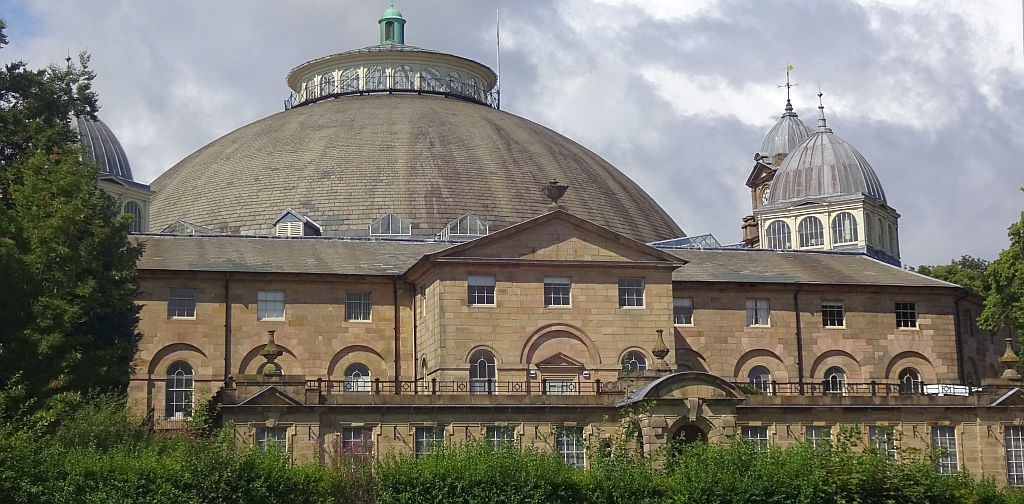By Joe Chick
Having explored the histories of Kenilworth, Colchester and Coventry, Dr Joe Chick arms himself with ‘A History of English Places’, the App for mobile devices developed by the Victoria County History (VCH) with Aimer Media. In this blog, he heads to Derbyshire, and the spa town of Buxton.
Spring water has given Buxton in Derbyshire its prominence from Roman times to the present day. Part of the earldom and, from the fourteenth century, Duchy of Lancaster, its waters became a centre of pilgrimage. William Cavendish, the fifth Duke of Devonshire (d. 1811) developed Buxton into a spa town in the late 18th century. By the end of the 19th century, the town’s population had grown fivefold since the arrival of its railway in 1863.
In the A History of English Places, Buxton’s history is taken from Samuel Lewis’ Topographical Dictionary of England (1848). Buxton – though the VCH in Derbyshire is making progress – not yet been covered by the Victoria County History, so there is not the extended history that was available for my earlier walks. My walk of Buxton uses this shorter history to explore the town. Lewis’s profile and the later map act as interesting historical artefacts. Lewis published in 1848 and the Ordnance Survey map at the end of the 19th century, the differences between the two highlight a changing landscape across a time of rapid growth, encouraged by the coming of the railway to this inland resort.
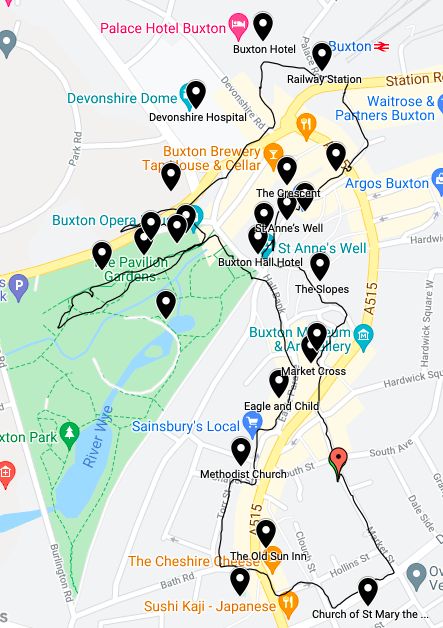
Joe’s walk around Buxton. You can view it in more detail here.
Spring Water
Setting off from Market Street car park, my walk took me to the oldest monument that I would pass. The market cross most likely dates from the 15th century. Originally located at Cockerd Hill, off Palace Road, it has since been moved twice. It is now located outside the town hall that was built in 1887–8.
Heading towards the heart of the spa town, I crossed a park called The Slopes. This had been the pleasure grounds of the sixth Duke of Devonshire William Cavendish, d. 1858) in the early 19th century. The Crescent is home to the major spa buildings. At the western end is Buxton Hall Hotel (now called Old Hall Hotel). Here stood a town house built in 1572 for the Earl of Shrewsbury’s guests, including Mary Queen of Scots. It was rebuilt in the 18th-century as a hotel for aristocrats, with stairs leading directly to the natural baths next door.
Used to this day by residents and visitors, St Anne’s Well dates from about 1940 but has been the site of wells since the Roman era. A shrine at the spring attracted pilgrims to medieval Buxton, closed due to reformist doctrine in the Reformation era but reopened in 1572. The app’s history describes how, when Lewis was writing, there was a marble basin with both a hot and cold-water pump inside a Grecian-style temple.
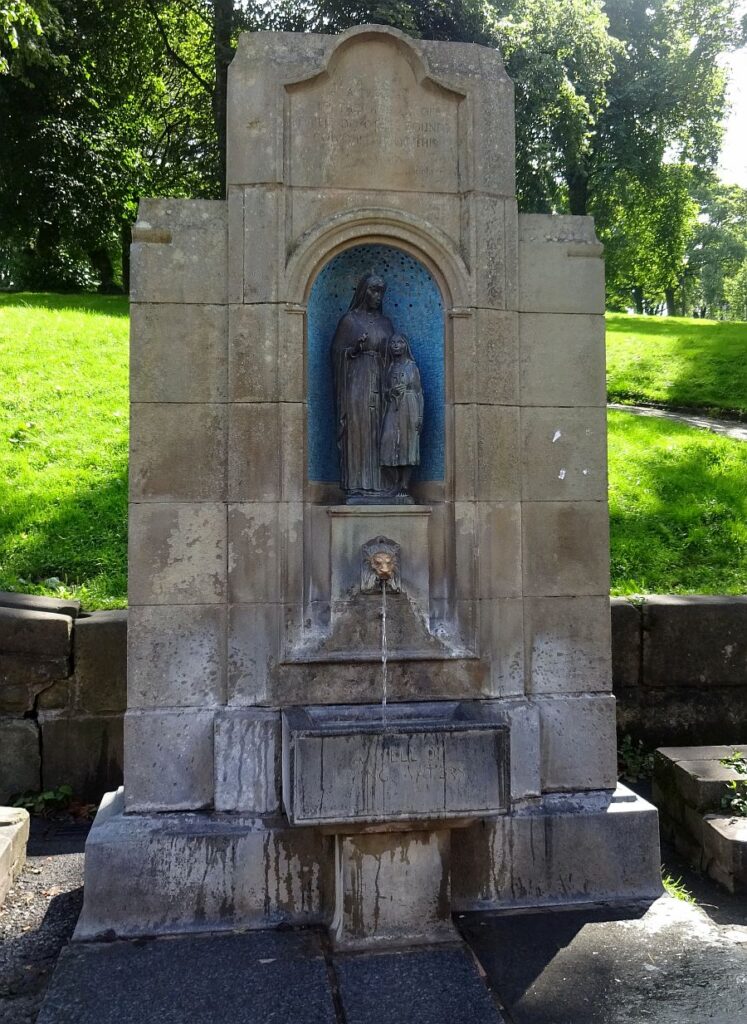
St Anne’s Well, Buxton
The Crescent was built in 1781 by the fifth Duke of Devonshire. It housed a hotel for spa visitors, along with five lodgings and an assembly room. Alongside are the thermal baths, built in the early 19th century with the present building being from 1852–3. Opposite is the 1894 pump room for drinking the waters.
Railways and Recreation
Next the app’s map guided me to sites developed in the decades after Lewis. One wall of an 1863 train shed is a remnant of the station that stimulated change, including the construction of Buxton Hotel (now called Palace Hotel) five years later. Nearby is a late 18th-century building that originated as stables for 120 horses for guests at The Crescent. In 1859, part of it was converted into the Devonshire Royal Hospital, with a dome and clocktower added, offering hot water treatment to the poor as a charitable endeavour.
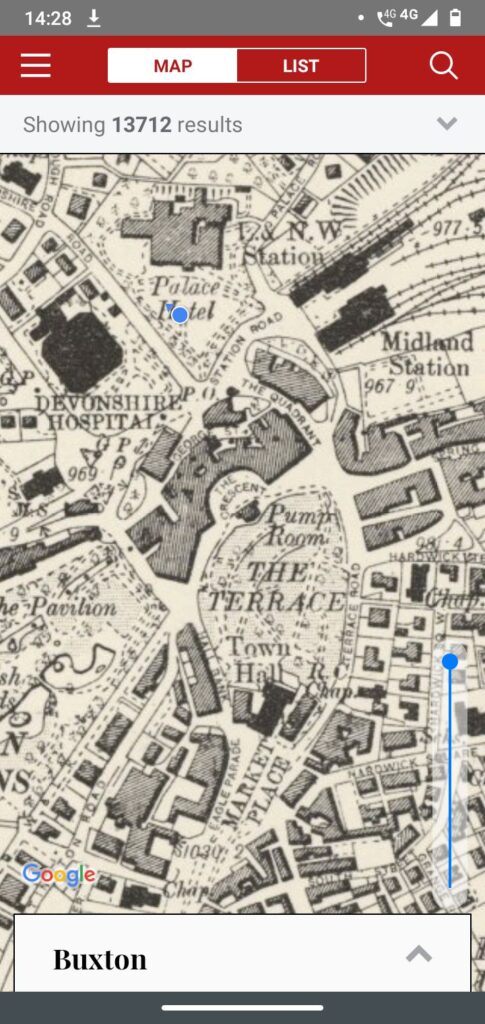
Buxton in the late 19th century, as shown on the VCH App, ‘A History of English Places’
Passing the early 19th-century church of St John the Baptist, my walk reached a series of leisure ventures from Buxton’s late 19th-century development. The first is the Opera House, built in 1901–03. Alongside is The Conservatory, a building from 1870–1 that served as a concert hall. Next are two parts of the Pavilion: the Pavilion Gardens Arts Centre, formerly known as the Paxton Suite (a theatre from 1889) and the 1870 Central Hall (rebuilt in 1984 following a fire two years before). At the western end is The Octagonal, a concert hall built in 1875 and extended in the 20th century.
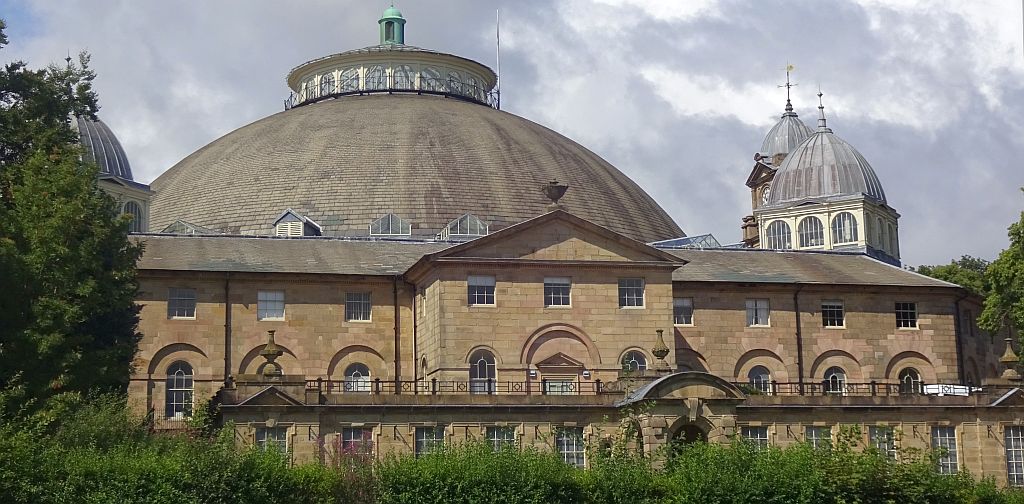
The Devonshire Royal Hospital, Buxton
South of the Spring
At this point, walkers may choose to deviate from the map through the Pavilion Gardens to Fountain Street. Due to a funfair, I could not! Now Buxton’s main park, the gardens may have been developed to serve the guests staying at Buxton Hall Hotel. They were remodelled by the seventh Duke of Devonshire in the late 19th century.
The final section of the walk passed coaching inns and churches. The Eagle and Child (now the Eagle Hotel) was built in 1760, replacing a 16th-century inn, by the Duke of Devonshire for spa visitors. A town in which John Wesley had preached, the 1840 Methodist Church replaced a smaller and less conveniently located late eighteenth-century chapel. A little further south lies St Anne’s, a parish church dating from 1625. After passing the Sun Inn, a coaching inn from the mid-18th century, I reached the more recent church of St Mary the Virgin. Built from 1914 onwards, it served the town’s growing population.
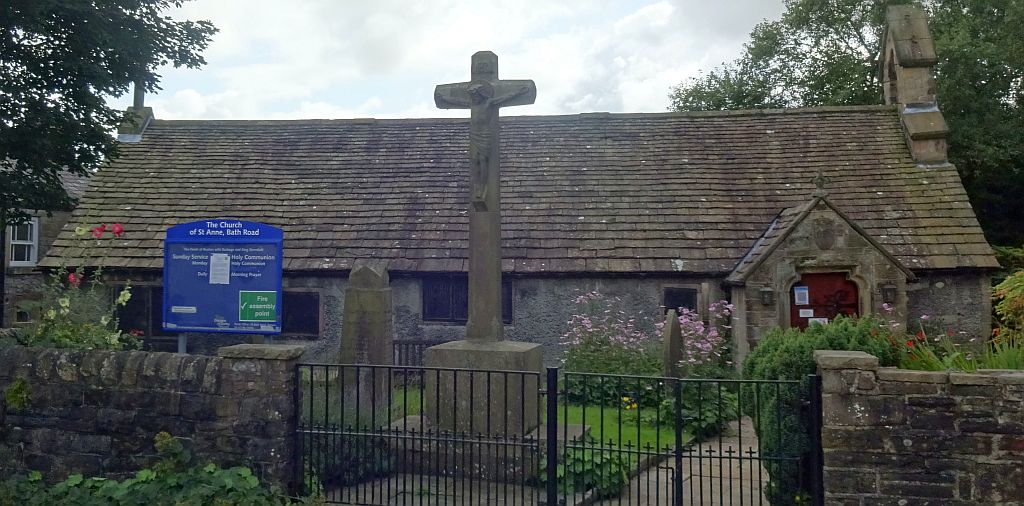
In my next blog, I head to Bristol, a city with a unique history that played an important part in the development of the medieval realm.
Dr Joe Chick studies English monastic towns and teaches medieval and early modern history at the University of Warwick. Joe currently holds a research internship with the IHR Centre for the History of People, Place and Community.

